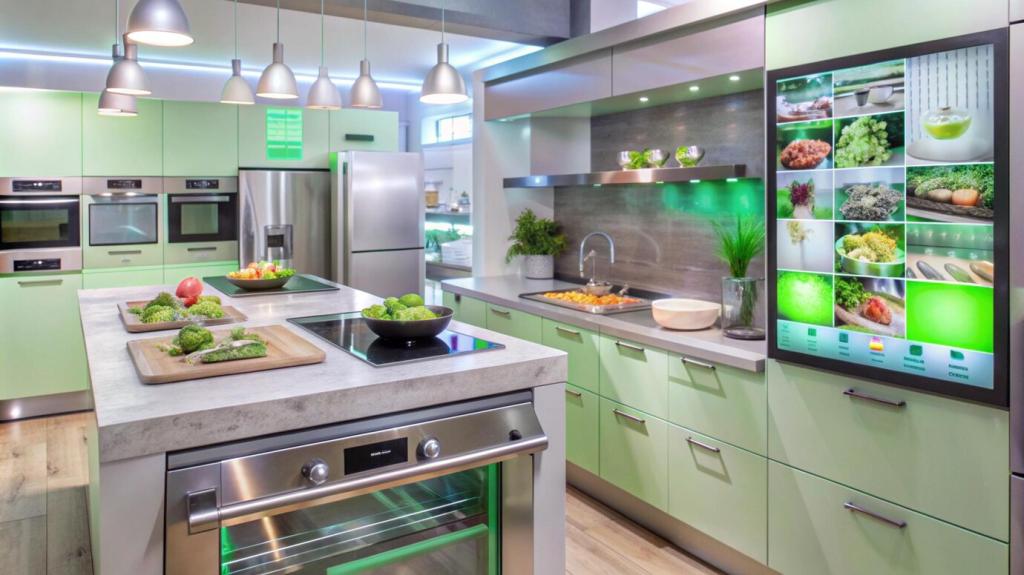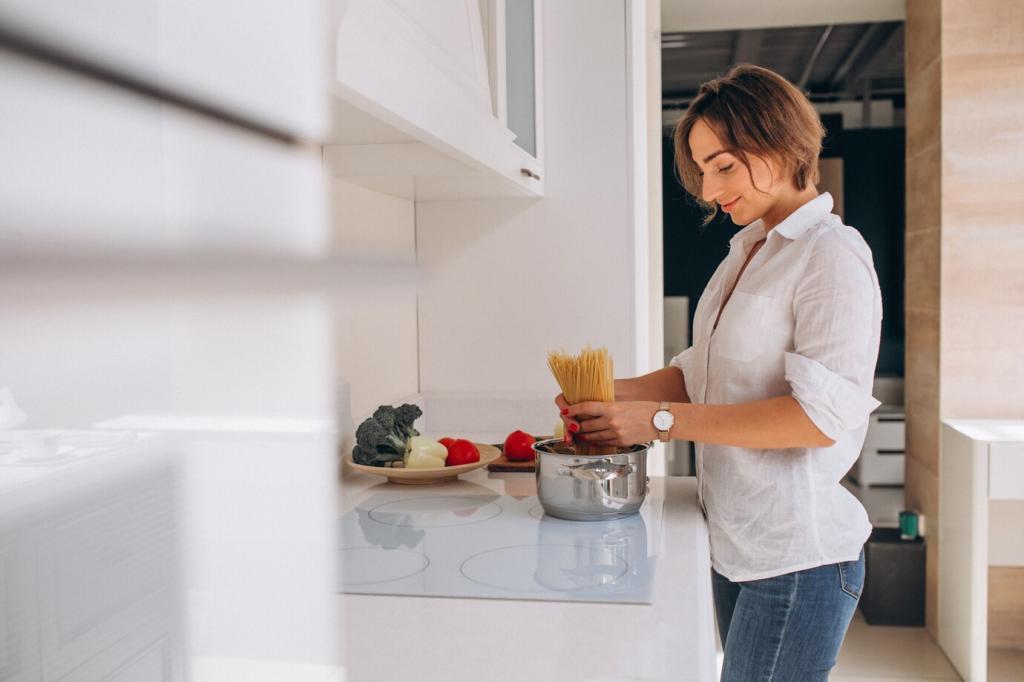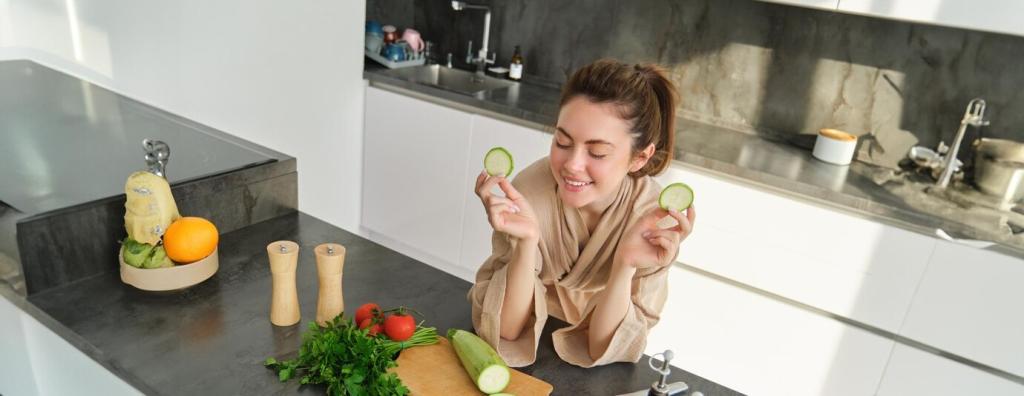Habits and Nudges That Stick
Group breakfast items together, use clear bins, and keep most-used foods in the front. Label leftovers with dates so decisions are quick. Shorter door-open times reduce cold air loss and compressor work. It is a tiny behavior tweak that pays off daily in savings and fresher, safer food.
Habits and Nudges That Stick
Agree on simple rules: lids on, burners matched, kettles filled only with needed water, and appliances switched fully off overnight. Post a friendly checklist on the fridge and celebrate consistency weekly. These micro-habits quickly become second nature, cutting waste while preserving the joy and rhythm of cooking.






